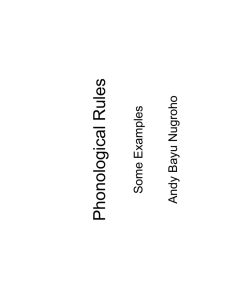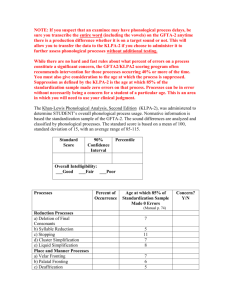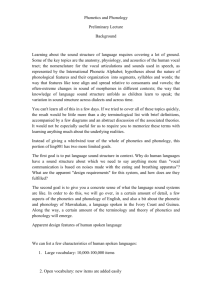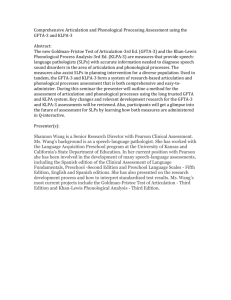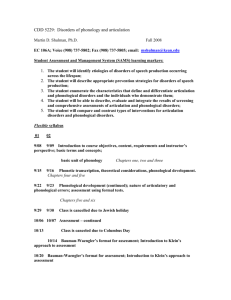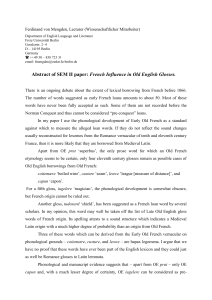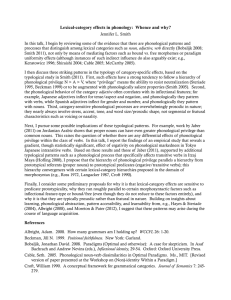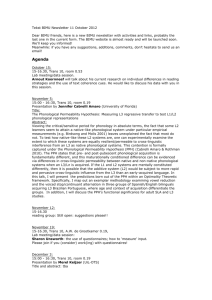Lecture 3. Phonological development in children.
advertisement
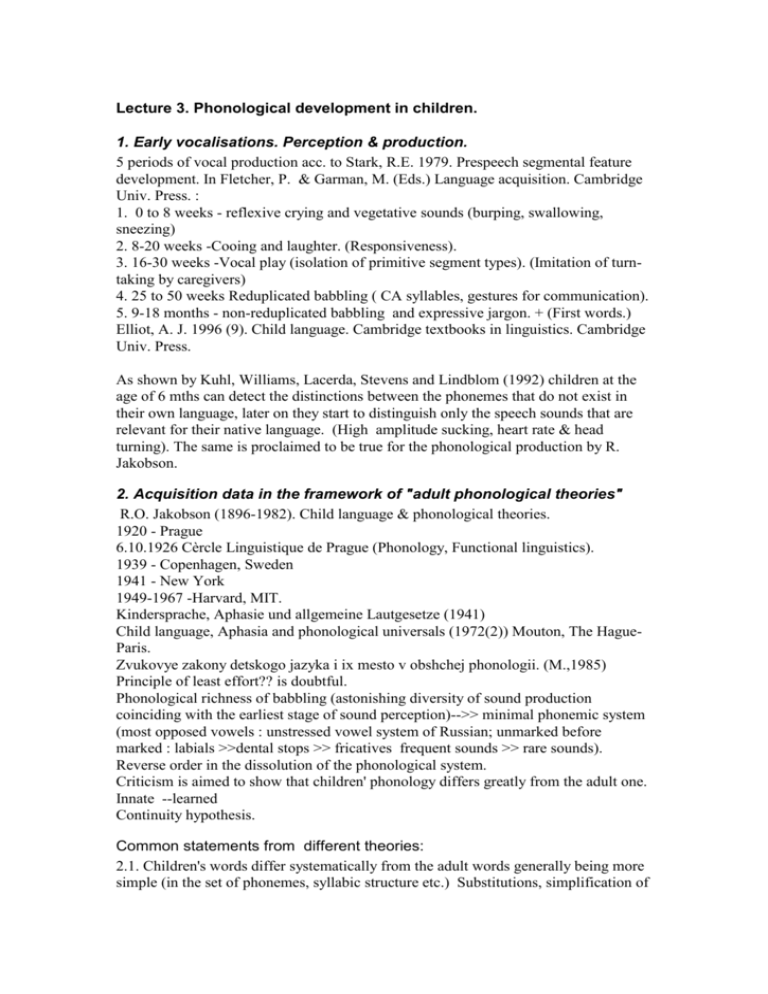
Lecture 3. Phonological development in children. 1. Early vocalisations. Perception & production. 5 periods of vocal production acc. to Stark, R.E. 1979. Prespeech segmental feature development. In Fletcher, P. & Garman, M. (Eds.) Language acquisition. Cambridge Univ. Press. : 1. 0 to 8 weeks - reflexive crying and vegetative sounds (burping, swallowing, sneezing) 2. 8-20 weeks -Cooing and laughter. (Responsiveness). 3. 16-30 weeks -Vocal play (isolation of primitive segment types). (Imitation of turntaking by caregivers) 4. 25 to 50 weeks Reduplicated babbling ( CA syllables, gestures for communication). 5. 9-18 months - non-reduplicated babbling and expressive jargon. + (First words.) Elliot, A. J. 1996 (9). Child language. Cambridge textbooks in linguistics. Cambridge Univ. Press. As shown by Kuhl, Williams, Lacerda, Stevens and Lindblom (1992) children at the age of 6 mths can detect the distinctions between the phonemes that do not exist in their own language, later on they start to distinguish only the speech sounds that are relevant for their native language. (High amplitude sucking, heart rate & head turning). The same is proclaimed to be true for the phonological production by R. Jakobson. 2. Acquisition data in the framework of "adult phonological theories" R.O. Jakobson (1896-1982). Child language & phonological theories. 1920 - Prague 6.10.1926 Cèrcle Linguistique de Prague (Phonology, Functional linguistics). 1939 - Copenhagen, Sweden 1941 - New York 1949-1967 -Harvard, MIT. Kindersprache, Aphasie und allgemeine Lautgesetze (1941) Child language, Aphasia and phonological universals (1972(2)) Mouton, The HagueParis. Zvukovye zakony detskogo jazyka i ix mesto v obshchej phonologii. (M.,1985) Principle of least effort?? is doubtful. Phonological richness of babbling (astonishing diversity of sound production coinciding with the earliest stage of sound perception)-->> minimal phonemic system (most opposed vowels : unstressed vowel system of Russian; unmarked before marked : labials >>dental stops >> fricatives frequent sounds >> rare sounds). Reverse order in the dissolution of the phonological system. Criticism is aimed to show that children' phonology differs greatly from the adult one. Innate --learned Continuity hypothesis. Common statements from different theories: 2.1. Children's words differ systematically from the adult words generally being more simple (in the set of phonemes, syllabic structure etc.) Substitutions, simplification of clusters, deletion of consonants & syllabic elision. Scheme by Peters. Syllabic == phonemic children. 2.2. Children's production changes from the limited segmental inventories and syllable/word structure, and normally they achieve the adult system by the age of 6. 2.3.Variability is observed both between children and within children. 2.4. Children perceive words more accurately than they produce them. 2.5. Phonological development has many similarities with lexical, or morphological development. 3. Linguistic typology and the relevance of different phonological measures. 3.1. Prosodic characteristics (pitch - accent languages, like Japanese; duration Finnish (mora), vowel reduction in Russian; intensity , rhythmic / arrhythmic; foot minimal group of syllables that contains a single prosodic contrast). 3.2. Morphosyntactic chunks : tendency to an open syllable. Nash adres ne dom i ne ulica [na sha dri sni do my ni u li ca] vo pole berjoza stojala == v Opele berjoza stojala. un arbre, les arbres, l’arbre, aux arbres. 3.3. Number of morphemes per word. Synthesis, fusion. 4. Protomorphemes and fillers. References. Peters, Ann. 1997. Language typology, Prosody, and the Acquisition of Grammatical Morphemes. CLSLA V.5, pp.136/197. Peters, Ann. 1983. The units of language acquisition. (Monographs in Applied Psycholinguistics.) NY: Cambridge, Univ. Press. Peters, Ann & Menn. 1993. L. False starts and filler syllables: Ways to learn grammatical morphemes. Language, 69, 742-777. Dressler W. U. (Ed.) 1997. Studies in pre- and protomorphology. Veröffentlichungen der Kommission für Linguistik und Kommunikationsforschung N 26. Verlag der Österreichischen Akademie der Wissenschaften. Wien, 1997. pp. 37-45 Bernhardt, B.H., Stemberger, J.P. 1998. Handbook of phonological development . From the Perspective of Constraint-Based Nonlinear Phonology. Academic Press.

